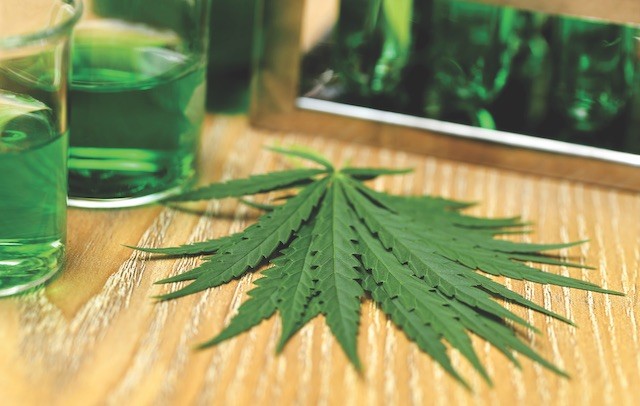Like most cannabis labs, SC Laboratories Inc. performs many types of tests for our customers. Besides measuring the cannabinoid content of a sample, we also measure the concentration of aromatic compounds called terpenes that give cannabis its smell and taste and contribute to the unique effects from one strain to the next. We can test a seedling’s DNA to measure whether it will grow up to be male or female. We also can use that DNA to create a genetic fingerprint or assess the lineage from a prized breeding project.
Until relatively recently, however, we have done very few of the tests we consider to be most important to the patients using the finished cannabis products. These are the tests that look for toxic chemicals or harmful microorganisms that can contaminate cannabis just as easily as they can contaminate food and other products consumers place on or in their bodies. Some tests include measure mold and bacteria levels; others measure pathogenic organisms growing on a sample. Still others measure solvent residues in extracts and look for harmful chemicals that sometimes contaminate low-grade solvents or look for potentially harmful pesticide or plant-growth-regulator residues.
For several reasons, safety testing was slow to catch on in the cannabis marketplace. Until Colorado passed recreational cannabis testing legislation, none of the states had laws requiring any type of quality control for growers or infused products makers. While cannabinoid and terpene tests, which are relatively cheap, can improve the marketability of a product and give the producer a return on their investment, safety testing is expensive and the results often indicate the product is not safe for consumption. Without the proper legislation in place, there are very few incentives for the cannabis industry to regulate itself. While many pioneering growers and producers saw the value in promoting that their products are free of contaminants, for the first several years of SC Labs’ existence, safety testing never accounted for more than 5 percent of our workload.
Over the past year, however, we have experienced a drastic uptick in the number of safety tests we perform for our customers. The watershed moment for us literally happened overnight with an event in Northern California.
With a long history of drawing the best growers, The Emerald Cup is one of the premier cannabis competitions; therefore, growers of the best cannabis from the Emerald Triangle and the rest of the state participate. The competition always has been an organic and outdoor cup requiring growers to swear they only use organic cultivation techniques and grow under full sun.
We have a special relationship with The Emerald Cup. Testing for the cup was our first gig as a lab starting, with potency testing of each entry.
Over the years, the Emerald Cup added more kinds of testing to the mix. However, not until last year, when we were asked to test all entries for pesticide residues, did we see a sea change in the safety-testing landscape. Because The Emerald Cup is highly visible within the grower community and entrants must avow their submissions are organically grown, the entrees that tested positive for pesticide residues brought about a very public realization that pesticide use on cannabis crops is pervasive.
While The Emerald Cup contestants tested positive at a much lower rate than the general population of samples we see, more than 13 percent of samples tested positive for pesticide or plant-growth-regulator residues. (In the previous October’s general population tests, 43 percent of tests returned a positive result.) The fallout was immediate: Several entrants were disqualified from the competition, and the attendees received a very public demonstration of just how pervasive pesticide use is in the cannabis marketplace.
The Emerald Cup certainly isn’t the only impetus driving producers to increase safety testing. Liability lawsuits in Colorado, coupled with regulations requiring testing in many legal cannabis states, has brought about increased awareness of the issue.
Since the instrumentation needed to perform proper pesticide testing is extremely expensive, increased demand for the test has made it financially feasible for laboratories to invest in new equipment to bring detection levels down and allow labs to look for more and more pesticides in each sample. We have begun to see many other labs publishing pesticide failure rates similar to ours as they upgrade their equipment. SC Labs has invested more than $1 million this year alone in a continuous effort to improve our tests and keep up with demand.
If pesticides are used on every food crop, why are they such an issue when used on cannabis? The answer is somewhat complicated, but federal prohibition plays a large part in the story. The Environmental Protection Agency is tasked with evaluating the safety of pesticides used on any crop. Since cannabis is federally illegal, there is nothing compelling the federal agency to provide guidance for pesticide use on cannabis. Some cannabis is consumed via inhalation, so it is difficult to compare the safety of a particular pesticide’s use on another crop to its use on cannabis. For example, if myclobutanil is sprayed on grapes to prevent mold, the grapes can be washed. Even if they aren’t washed, the grapes would be eaten rather than combusted and inhaled directly into the lungs, leading to less exposure to the potentially harmful chemicals. Therefore, it would be impossible to correlate allowable mycolobutanil levels in grapes to cannabis. Since there is no guidance for use of pesticides on cannabis, pesticide use on cannabis is forbidden as potentially dangerous.
As cannabis inches closer to the end of prohibition, producers will be confronted with unique challenges. Cannabis will be the only crop in America that will need to be produced solely without the use of pesticides. As we have seen with our customers, it is entirely possible. Once growers are empowered with the information that proper pesticide testing can provide, they are able to change their practices and begin phasing out the use of pesticides. Despite our tests becoming more sensitive, overall pesticide failure rates continue to drop.
While the question about which pesticides are safe for use on cannabis won’t be answered until federal prohibition ends, the increased awareness of pesticide use means the regular consumer in most states where it is legal will be able to enjoy their favorite herb without having to worry about which toxic chemical they are also ingesting. Growers and producers certainly will face a learning curve in producing cannabis without the use of chemicals, but the industry and consumers will each benefit from the unique situation.










